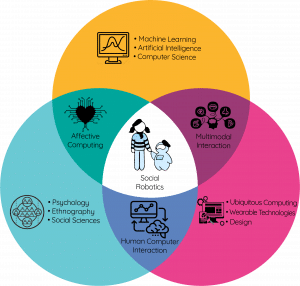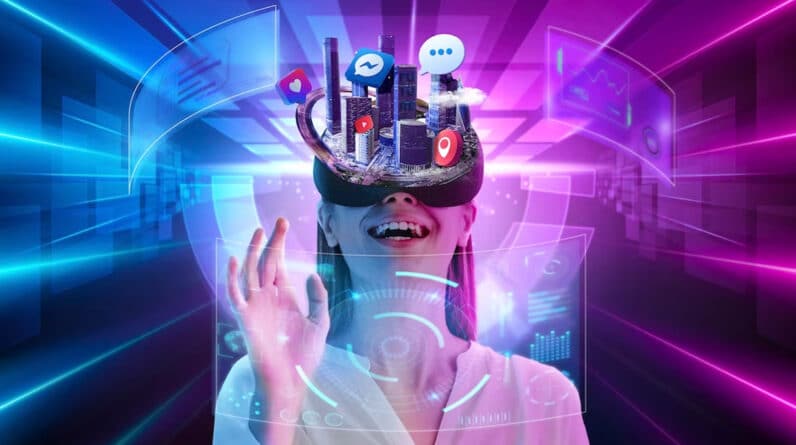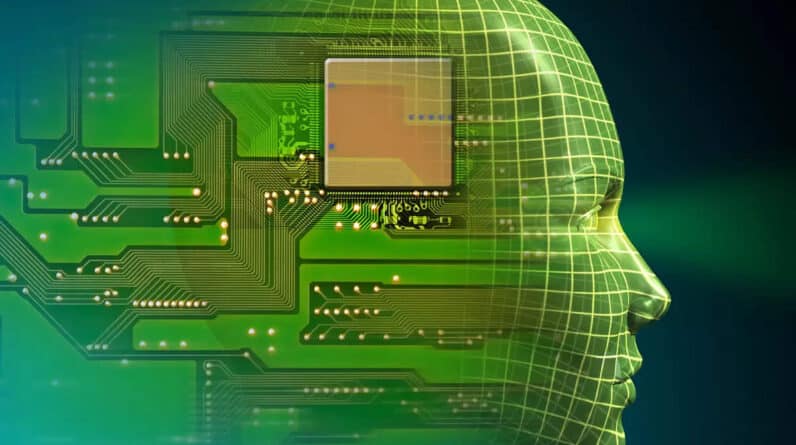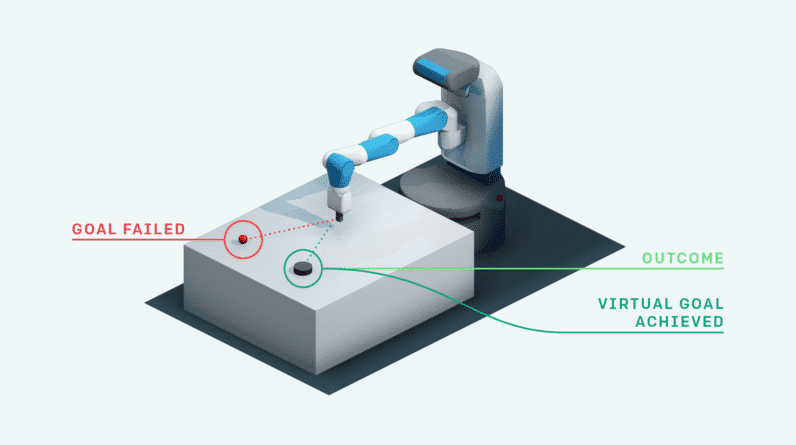In today’s rapidly evolving world, the collaboration between humans and artificial intelligence (AI) is becoming increasingly prevalent in problem-solving scenarios. From tackling intricate puzzles to addressing complex issues, this partnership has the potential to revolutionize the way we approach challenges. “Bridging The Gap: Human-AI Collaboration In Problem Solving” explores the fascinating realm of this collaboration, shedding light on its benefits, potential drawbacks, and the exciting possibilities it holds for the future. Discover how this dynamic fusion of human intellect and AI capabilities is paving the way for innovative problem-solving approaches that transcend the limits of our individual abilities.

Understanding Human-AI Collaboration
Definition of Human-AI Collaboration
Human-AI collaboration refers to the symbiotic relationship between humans and artificial intelligence systems, wherein both parties work together to solve complex problems and make informed decisions. It involves leveraging the unique capabilities of AI technology while harnessing the expertise and cognitive abilities of human beings. This collaboration allows for a more comprehensive approach to problem-solving by combining the analytical capabilities of AI with the creativity, intuition, and ethical considerations of humans.
The Importance of Collaboration
Collaboration between humans and AI systems has become increasingly crucial in today’s world, where complexity and data overload have become the norm. Human expertise alone may no longer be sufficient to tackle the intricacies of complex problems. By collaborating with AI, humans can leverage advanced analytics, data processing, and pattern recognition capabilities to gain deeper insights and make informed decisions. Furthermore, collaboration allows for the augmentation of human abilities, enabling individuals to accomplish tasks more efficiently and effectively.
The Growing Trend of Human-AI Collaboration
In recent years, human-AI collaboration has gained significant traction across various domains. From healthcare to finance, environmental management to customer service, organizations are increasingly recognizing the potential of combining human and AI capabilities. This growing trend can be attributed to advancements in AI technologies, increased access to data, and a growing awareness of the benefits of collaboration. As AI continues to evolve, it is becoming an integral part of problem-solving processes, transforming industries and creating new opportunities for individuals and organizations alike.
Benefits of Human-AI Collaboration
Leveraging Human Expertise
Human-AI collaboration allows for the integration of human expertise into AI-driven problem-solving processes. While AI systems excel at analyzing large amounts of data and identifying patterns, they often lack the ability to consider ethical implications, context, and subjective factors. By incorporating human expertise, AI systems can benefit from a human’s understanding of nuanced information, cultural context, and ethical considerations, enhancing the quality and completeness of problem-solving outcomes.
Enhanced Problem-Solving Abilities
Collaboration between humans and AI systems leads to enhanced problem-solving abilities by combining the analytical capabilities of AI with human creativity and intuition. AI systems can process data at an unprecedented scale and speed, enabling humans to uncover hidden patterns, anomalies, and correlations. Meanwhile, humans can provide the critical thinking and domain knowledge necessary to interpret the results and generate innovative solutions. This synergy allows for a more comprehensive and effective problem-solving approach.
Increased Efficiency and Productivity
Human-AI collaboration can significantly increase efficiency and productivity by automating repetitive and time-consuming tasks. AI systems can handle data processing, information retrieval, and other mundane activities, freeing up human resources to focus on higher-value tasks. Additionally, AI can assist humans in decision-making processes by providing real-time insights, reducing the time required for analysis and improving the speed and accuracy of decision-making. By working together, humans and AI systems can achieve higher levels of productivity and accomplish more in less time.
Reduced Bias and Errors
Collaboration with AI systems can help mitigate biases and reduce errors in problem-solving processes. Humans are susceptible to cognitive biases and subjectivity, leading to potential errors and inconsistencies in decision-making. AI, on the other hand, is designed to analyze data objectively and make decisions based on predefined rules and algorithms. By incorporating AI technologies into problem-solving workflows, humans can benefit from unbiased analysis and decision support, minimizing the risk of errors caused by human limitations.

Challenges in Human-AI Collaboration
Ethical Dilemmas
Human-AI collaboration raises various ethical dilemmas that need to be addressed. AI systems are only as good as the data they are trained on, and biases within the data can perpetuate and amplify existing societal biases. It is essential to ensure that biases, discrimination, and unfairness are not reinforced by AI systems or the collaboration process itself. Additionally, the responsibility for the decisions made by AI systems can become unclear, raising questions about liability and accountability. Ethical frameworks and guidelines need to be developed to govern human-AI collaboration and ensure its ethical and responsible implementation.
Trust and Transparency
Establishing trust and transparency in human-AI collaboration is critical for its successful adoption. Humans need to trust AI systems and have confidence in their abilities and outputs. Lack of transparency in AI decision-making processes can create uncertainty and skepticism, hindering collaboration. Building trust requires transparency in the algorithms and models used, as well as clear explanations and justifications for AI-driven recommendations. Additionally, clear communication and feedback mechanisms are necessary to ensure that humans understand the decision-making process and can provide input.
Skill Requirements and Training
Human-AI collaboration demands the development of new skill sets and training programs. Individuals need to acquire not only technical AI skills but also the ability to understand and interpret AI-driven outputs. This includes understanding the limitations of AI systems, interpreting probabilistic results, and critically evaluating AI recommendations. Likewise, technical AI experts need to develop an understanding of the problem domain, ensuring that their algorithms and models align with the specific needs and values of the collaboration. Integrating AI literacy and training programs into education and professional development initiatives becomes imperative for successful collaboration.
Integration and Adoption
The integration of AI technologies into existing problem-solving workflows can present challenges. Organizations must navigate complex technical and infrastructural requirements to ensure the seamless integration of AI systems. This may involve data integration, system compatibility, and process reengineering. Change management and addressing concerns about job displacement are crucial for the successful adoption of human-AI collaboration. Organizations need to provide proper training and support to facilitate the transition, ensuring that all stakeholders understand the benefits and are engaged in the process.
The Role of Humans in Problem Solving
Human Cognitive Abilities
Humans possess unique cognitive abilities that complement the analytical capabilities of AI systems. While AI excels at processing and analyzing large amounts of data, humans excel in cognitive tasks that require creativity, contextual understanding, and emotional intelligence. Human cognition enables the interpretation of complex and ambiguous information, the identification of patterns in noisy data, and the generation of innovative solutions. By leveraging these cognitive abilities, humans play a crucial role in problem-solving, complementing and enhancing the capabilities of AI.
Creative Thinking and Intuition
Creative thinking and intuition are fundamental human capabilities that AI systems are yet to fully replicate. AI excels at finding patterns based on existing data, but humans can envision new possibilities and think outside the box. Human creativity allows for the generation of innovative ideas, the exploration of alternative solutions, and the ability to adapt to changing circumstances. Intuition, on the other hand, enables humans to make quick, contextually informed decisions based on incomplete or uncertain information. The integration of creative thinking and intuition with AI-driven analytics leads to more robust problem-solving outcomes.
Decision-Making and Judgment
Humans possess decision-making and judgment abilities that are critical for effective problem solving. While AI systems can provide data-driven insights and recommendations, humans are responsible for making the final decisions. Human judgment takes into account a broader range of factors, including ethical considerations, social implications, and long-term consequences. Humans can evaluate the practicality, feasibility, and desirability of potential solutions, ultimately choosing the most suitable course of action. By combining AI’s analytical capabilities with human decision-making, the quality and relevance of decisions are significantly enhanced.
Ethical Considerations
The ethical considerations involved in problem-solving processes cannot be entirely automated. Humans are responsible for assessing the ethical implications of decisions and ensuring that they align with societal norms, values, and legal frameworks. AI systems lack the ability to comprehend complex ethical dilemmas, cultural contexts, and subjective perspectives. Therefore, human involvement is essential to provide ethical oversight, ensure fairness, and prevent unintentional biases or discrimination. Integrating human expertise in ethical considerations fosters responsible problem solving and avoids potential negative consequences.

The Role of AI in Problem Solving
AI’s Analytical Capabilities
AI systems excel at analyzing vast amounts of data, extracting insights, and identifying patterns that may not be apparent to humans. With the ability to process and analyze data at scale and in real-time, AI plays a crucial role in augmenting human problem-solving capabilities. By leveraging AI’s analytical capabilities, humans can obtain a more comprehensive understanding of complex problems and make informed decisions. AI algorithms can uncover hidden relationships, correlations, and anomalies, providing humans with valuable insights that are essential for effective problem solving.
Data Processing and Pattern Recognition
One of AI’s core strengths lies in its ability to process and analyze large volumes of structured and unstructured data efficiently. Humans are limited by their cognitive capacity when dealing with a vast amount of information, which can lead to oversight and errors. AI systems, on the other hand, can process data rapidly and accurately, identifying patterns, trends, and outliers that humans may not have recognized. This data processing and pattern recognition capability of AI is invaluable in problem solving, allowing humans to make data-informed decisions and take proactive actions.
Automated Decision-Making
AI systems can automate decision-making processes, providing real-time recommendations based on predefined rules and algorithms. This automation streamlines decision-making, particularly for repetitive and routine tasks that do not require human intervention. AI’s automated decision-making capability enables organizations to achieve greater efficiency and consistency in problem-solving processes. However, it is essential to strike the right balance between human judgment and automated decisions to ensure that ethical considerations, nuance, and subjective factors are appropriately addressed.
Machine Learning and Adaptability
AI’s machine learning capabilities enable it to learn from past experiences and improve its performance over time. Through exposure to large datasets and feedback mechanisms, AI systems can continuously refine their models and algorithms, enhancing their problem-solving abilities. This adaptability allows AI to stay relevant and effective in dynamic environments, where conditions and data may change over time. By continuously learning and adapting, AI systems can provide humans with up-to-date insights and recommendations, ensuring that problem-solving approaches remain agile and optimal.
Collaborative Problem-Solving Frameworks
Defining the Problem Space
Collaborative problem-solving begins with clearly defining the problem space. This involves identifying the scope, objectives, constraints, and desired outcomes of the problem-solving process. Humans and AI need to work together to articulate the problem, understanding its context and the specific challenges involved. Defining the problem space collaboratively ensures that all stakeholders have a shared understanding and enables the effective utilization of AI technologies to address the problem.
Human-AI Interaction and Communication
Effective interaction and communication between humans and AI are essential for successful collaboration. This involves designing intuitive interfaces and interaction paradigms that allow for seamless communication and information exchange between humans and AI systems. It is crucial to develop systems that can understand human inputs and respond in a human-like manner, reducing communication barriers and facilitating effective collaboration. Human-AI interaction should be user-centered, enabling humans to easily control and understand the contribution of AI systems in problem solving.
Shared Decision-Making
Collaborative problem-solving requires shared decision-making processes, wherein humans and AI jointly participate in decision-making. This involves combining AI-driven analytics, recommendations, and insights with human judgment and expertise. Shared decision-making ensures that ethical considerations, contextual understanding, and subjective perspectives are integrated into the decision-making process. Humans and AI need to engage in open discussions, evaluate potential options, and choose the most suitable course of action that aligns with the problem-solving objectives.
Feedback and Iteration
Continuous feedback and iteration are necessary for optimizing collaborative problem-solving processes. Humans and AI systems need to exchange feedback to improve accuracy, enhance performance, and refine problem-solving approaches. Feedback mechanisms should be established to allow humans to provide input on AI-driven outputs and recommendations. This feedback loop enables AI systems to learn from human responses, adapt to evolving needs, and continuously improve their problem-solving abilities. Through regular iteration, humans and AI can refine their collaboration and achieve increasingly effective problem-solving outcomes.

Successful Examples of Human-AI Collaboration
Medical Diagnosis and Treatment
Medical diagnosis and treatment have greatly benefited from human-AI collaboration. AI algorithms can analyze medical records, laboratory results, and imaging data to aid in the diagnosis of diseases. While AI systems provide initial assessments, medical professionals integrate their domain knowledge, patient context, and subjective judgment to finalize the diagnosis and make treatment decisions. This collaboration improves diagnostic accuracy, reduces errors, and enables personalized treatment plans based on the specific needs of each patient.
Financial Analysis and Trading
In the financial sector, human-AI collaboration has revolutionized analysis and trading strategies. AI systems can analyze vast financial datasets, monitor market trends, and identify investment opportunities in real-time. Financial professionals work alongside AI systems to interpret the results, evaluate risks, and make investment decisions that align with their clients’ financial goals and risk tolerance. This collaboration provides improved accuracy in investment decisions, supports efficient portfolio management, and enhances overall financial performance.
Environmental Monitoring and Management
Environmental monitoring and management have seen significant advancements through human-AI collaboration. AI systems can process satellite imagery, sensor data, and other environmental datasets to identify patterns, detect changes, and predict potential environmental hazards. Environmental experts collaborate with AI systems to interpret the data, assess the impact on ecosystems, and make informed decisions regarding conservation and management strategies. This collaboration enables more accurate and timely environmental monitoring, facilitating proactive interventions and sustainable resource management.
Customer Service and Support
Customer service and support have been enhanced through human-AI collaboration. AI-powered chatbots and virtual assistants can understand customer inquiries, provide real-time responses, and offer personalized recommendations. When complex issues arise or emotional support is required, human representatives step in to address the concerns, empathize with customers, and resolve the problems effectively. This collaboration enables organizations to provide round-the-clock customer service, improve response times, and deliver tailored support, resulting in higher customer satisfaction.
Best Practices for Effective Human-AI Collaboration
Clear Roles and Responsibilities
Establishing clear roles and responsibilities is crucial for effective human-AI collaboration. It is essential to define the specific tasks that AI systems will handle and communicate these roles to all stakeholders involved. This clarity ensures that humans and AI systems understand their respective responsibilities and can work together seamlessly. Clear roles also help manage expectations and avoid potential conflicts or redundancy. Regular communication and feedback channels should be established to facilitate transparency and continuous alignment between humans and AI systems.
Trust-building Measures
Building trust between humans and AI systems is vital for successful collaboration. Trust can be fostered by ensuring transparency in AI decision-making processes, building explainable AI models, and providing understandable justifications for AI-driven outputs. Additionally, AI systems should be tested rigorously for reliability, accuracy, and fairness to instill confidence in their capabilities. Organizations should also prioritize data security and privacy, ensuring that data handling and processing adhere to ethical standards. By incorporating trust-building measures, human-AI collaboration can thrive, yielding optimal problem-solving outcomes.
Continuous Learning and Improvement
Human-AI collaboration requires a culture of continuous learning and improvement. Organizations should promote a growth mindset and encourage individuals to acquire new skills and knowledge related to AI. Regular training programs should be provided to keep humans updated with the latest developments and advancements in AI technology. Likewise, AI systems should be continuously trained and refined to adapt to evolving problem-solving needs. By embracing a culture of continuous learning, both humans and AI can enhance their problem-solving abilities and remain effective in a rapidly changing environment.
Regular Evaluation and Feedback
Regular evaluation and feedback mechanisms are essential to assess the effectiveness of human-AI collaboration. Organizations should implement processes to evaluate the impact and outcomes of collaborative problem-solving initiatives. Feedback from both humans and AI systems should be sought, allowing for continuous improvement and refinement of collaborative workflows. This evaluation process should include qualitative and quantitative measures, considering both the efficiency and the quality of problem-solving outcomes. Regular feedback ensures that humans and AI systems can adapt, learn from mistakes, and optimize their collaboration for better results.

Implications and Future Developments
Impact on Employment and Workforce
Human-AI collaboration has significant implications for the future of employment and the workforce. While it may automate certain tasks, it also creates new opportunities for individuals to leverage AI technologies and enhance their problem-solving capabilities. Jobs may evolve, requiring a combination of AI literacy and domain-specific expertise. The workforce needs to adapt and acquire new skills, focusing on areas that require uniquely human qualities such as creativity, empathy, and complex decision-making. Organizations need to prioritize reskilling and upskilling efforts to ensure a smooth transition and enable individuals to thrive in the era of human-AI collaboration.
Ethical and Social Implications
Human-AI collaboration raises ethical and social implications that need to be carefully considered. There is a need to ensure that AI systems do not perpetuate biases, discrimination, or unfairness, and that they align with ethical and legal frameworks. Transparency is essential in AI decision-making processes, allowing for accountability and ethical oversight. Additionally, privacy concerns and data security must be addressed to protect individuals’ sensitive information. Collaboration with AI should not undermine human autonomy or devalue human judgment. Addressing these ethical and social implications requires continuous dialogue, regulation, and responsible AI development practices.
Advancements in AI Technology
The field of AI technology is continuously evolving, and advancements in AI hold tremendous potential for human-AI collaboration. Improvements in natural language processing, computer vision, and machine learning algorithms enable AI systems to understand and interact with humans more effectively. AI technologies are becoming increasingly versatile, adaptable, and user-friendly, allowing for broader adoption and integration. As AI evolves, it will play an even more significant role in problem solving, augmenting human capabilities, and enabling new opportunities across various industries.
Potential for Further Integration
The collaboration between humans and AI is likely to become increasingly seamless and integrated in the future. AI systems will become more context-aware, understanding human behaviors, preferences, and intentions. The integration of AI technologies into everyday devices and interfaces will enable natural and effortless collaboration. AI-driven assistance will be ingrained in multiple aspects of life, from home automation to personalized healthcare. As AI becomes an integral part of problem-solving processes, humans will rely on AI’s analytical capabilities, while AI systems will depend on human judgment and domain expertise for optimal outcomes.
Conclusion
In conclusion, human-AI collaboration is a transformative approach to problem solving that leverages the unique capabilities of both humans and AI systems. By combining human expertise, cognitive abilities, and ethical considerations with AI’s analytical capabilities, data processing, and automation, collaboration can lead to enhanced problem-solving outcomes. Although challenges such as ethical dilemmas, trust-building, skill requirements, and integration need to be addressed, the benefits of human-AI collaboration are substantial. As technology continues to advance, embracing and exploring collaboration opportunities becomes essential for individuals, organizations, and society as a whole. By working together, humans and AI can bridge the gap and achieve remarkable problem-solving achievements.






